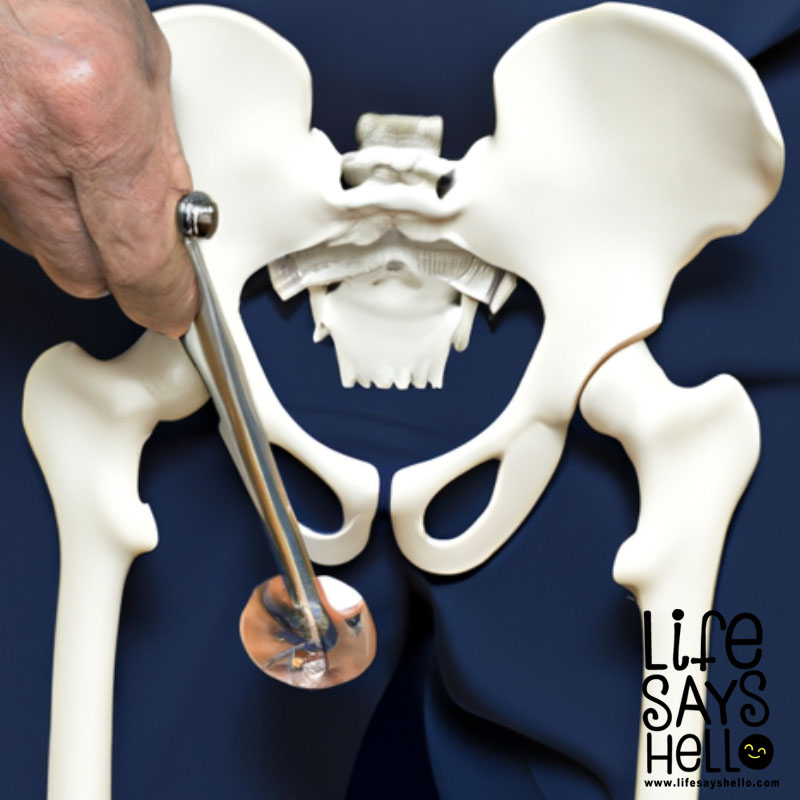Why Are My Feet Always Cold? 7 Possible Causes and What to Do
Do your feet constantly feel like blocks of ice, even when you're bundled up or the rest of your body feels warm? Are your toes always like little icicles seeking warmth?
You're not alone. Many people complain of chronically cold feet. But why does this happen?
From poor circulation to nerve damage, there are a number of potential causes behind perpetually frozen feet. Read on to learn 7 of the most common reasons your feet are always cold, plus tips for finding relief.
1. Poor Blood Circulation
One of the most widespread causes of constantly cold feet is poor circulation in the legs and feet. This can result from a number of underlying medical conditions that affect blood flow.
For example, those with peripheral artery disease (PAD) often experience cold feet. This condition causes the arteries that carry blood from the heart to the legs and feet to become narrowed or blocked. As a result, less oxygen-rich blood is able to reach the lower extremities.
Diabetes can also lead to poor circulation in the feet. Over time, high blood sugar levels associated with diabetes can cause damage to blood vessels and nerves. This impairs circulation and nerve function in the feet.
Certain medications can also affect circulation. Blood pressure medications like beta blockers work by slowing the heart rate, which means less blood is pumped out to the extremities. This can leave some people with constantly cold hands and feet.
Tips for improving circulation:
- Exercise regularly to boost blood flow in the legs and feet.
- Avoid long periods of sitting or standing to prevent blood pooling.
- Keep warm with socks and slippers to avoid constricting blood vessels.
- Consider supplements that support circulation like niacin, garlic, and ginkgo.
2. Anemia
Another potential cause of chronically cold feet is anemia, a condition where the blood lacks adequate healthy red blood cells.
Red blood cells carry oxygen from the lungs to the rest of the body. If you have anemia, your blood can't deliver enough oxygen to keep your body's tissues sufficiently oxygenated and warm.
There are many types of anemia, but the most common is iron deficiency anemia. This occurs when the body lacks iron to produce hemoglobin, the protein in red blood cells that allows them to carry oxygen.
Women are at higher risk for iron deficiency anemia due to blood loss from menstruation. Vegetarians and vegans may also be prone to this type of anemia if they don't supplement their diets with iron.
When anemia is moderate to severe, it can manifest in symptoms like chronically cold hands and feet. Fatigue, pale skin, dizziness, and shortness of breath are other common signs.
Tips for managing anemia:
- Increase iron-rich foods like red meat, beans, spinach, and fortified cereals.
- Take iron supplements if diet alone isn't correcting iron levels.
- Get tested for celiac disease, which impairs iron absorption.
- Consider testing for other causes like sickle cell anemia or thalassemias.
- Treat underlying health conditions contributing to anemia.
3. Hypothyroidism
When your thyroid gland is underactive and doesn't produce enough thyroid hormone, it causes a condition known as hypothyroidism. This affects the body's metabolic processes, including the maintenance of proper body temperature.
With an underactive thyroid, the body's metabolism slows down significantly. As a result, people with hypothyroidism tend to feel cold more easily. Their extremities, like the hands and feet, are often cold to the touch.
In addition to cold intolerance, other symptoms of hypothyroidism include unexplained weight gain, fatigue, constipation, dry skin and hair, muscle aches, and depression. The condition is more common in women over 50.
Tips for managing hypothyroidism:
- Get tested for thyroid hormone levels and autoimmune antibodies.
- Take synthetic thyroid hormone medication prescribed by your doctor.
- Ask about optimal thyroid lab ranges rather than just "normal."
- Adopt a thyroid-supporting diet rich in selenium and iodine.
- Try supplements like ashwagandha, zinc, and vitamin D.
- Use gloves, socks, and other warming gear to stay comfortable.
4. Peripheral Artery Disease
Peripheral artery disease (PAD) is a circulatory disorder in which the arteries that supply blood to the limbs become narrowed or blocked by plaque buildup. It most often affects the arteries supplying the legs and feet.
As mentioned earlier, PAD can significantly reduce blood flow to the lower extremities. This deprivation of blood can cause chronically cold, painful feet, especially when at rest.
Other symptoms of PAD include leg pain or cramping when walking that is relieved by rest (claudication), slow healing of foot wounds, pale or bluish skin discoloration in the feet and toes, and poor toenail growth.
PAD is associated with smoking, diabetes, high blood pressure, high cholesterol, and advanced age. However, the disease can occur in younger adults as well.
Tips for managing PAD:
- Quit smoking and avoid secondhand smoke.
- Follow an exercise program to stimulate blood flow.
- Ask your doctor about medications to improve circulation.
- Manage diabetes, cholesterol, and blood pressure.
- Discuss procedures like angioplasty to open blocked arteries.
- Keep feet warm and dry to prevent skin breakdown.
- Check feet daily for cuts, sores, or changes in color.
- Get prompt treatment for foot infections.
- Consider compression stockings to improve blood flow.
- Discuss surgery if symptoms are severe and limiting.
- Elevate legs when sitting to increase blood flow.
- Avoid constrictive footwear.
- Lose weight if overweight.
- Limit time in hot baths or showers that dilate blood vessels.
5. Nerve Damage
Nerve damage, also known as neuropathy, can interfere with the nerves that regulate temperature and blood flow in the feet. This can cause symptoms like chronically cold feet.
Peripheral neuropathy is damage to the peripheral nerves. It's a common complication of diabetes, affecting up to 50% of people with diabetes.
High blood sugar levels associated with uncontrolled diabetes can injure nerves in a variety of ways. This damage impairs sensation and function in the feet.
In addition to diabetes, other potential causes of peripheral neuropathy include:
- Autoimmune diseases like lupus and rheumatoid arthritis
- Infections like HIV/AIDS, shingles, and hepatitis C
- Kidney disease
- Alcohol abuse
- Vitamin deficiencies
- Chemotherapy drugs
- Injuries or trauma
No matter the cause, nerve damage can disrupt normal blood flow and temperature regulation. This is why cold feet are common with peripheral neuropathy.
Tips for managing neuropathy:
- Follow treatment plans for underlying causes.
- Keep blood sugar in control if diabetic.
- Ask about medications to reduce nerve pain.
- Try capsaicin cream to improve circulation.
- Take B vitamins and alpha-lipoic acid supplements.
- Wear shoes that fit well and don't rub.
- See a podiatrist for help preventing foot ulcers.
6. Raynaud's Phenomenon
Some people experience cold feet due to a condition called Raynaud's phenomenon. This disorder causes the small arteries supplying blood to the skin to abruptly constrict.
Raynaud's phenomenon most commonly affects the fingers and toes. Attacks cause the skin to turn pale white, then bluish, and finally bright red as the blood flow returns. The feet and toes feel very cold, numb, and prickly.
What triggers these blood vessel spasms? Exposure to cold temperatures is one common cause. But stress, anxiety, and strong emotions can also provoke an attack. For some, touching cold objects or entering an air-conditioned space prompts vasospasms.
Underlying autoimmune diseases increase the risk of developing Raynaud's. But for many, no cause is found. Women are more frequently affected than men.
Tips for managing Raynaud's:
- Keep warm with socks, boots, and gloves.
- Avoid rapid temperature changes.
- Identify and avoid triggers like stress and cold.
- Try relaxation techniques to reduce anxiety.
- Exercise regularly to boost circulation.
- Don't smoke or use nicotine products.
- Discuss medications that can reduce attacks.
7. Being Underweight
Carrying too little body fat can also lead to frequently cold feet.
Fat helps insulate the body and prevent heat loss. People who are underweight or very lean often struggle to maintain warmth, especially in their extremities.
When your body lacks sufficient fat reserves for insulation, it can't retain enough heat to keep the feet and toes warm. You may notice your feet are often like blocks of ice.
Being underweight has a variety of causes, including:
- Eating disorders like anorexia or bulimia
- Hyperthyroidism
- Chronic diseases that lead to malnourishment
- Genetics
In addition to chronically cold feet, other symptoms of being underweight include:
- Fatigue and weakness
- Hair loss
- Irregular periods in women
- Frequent infections due to a weakened immune system
Tips for gaining healthy weight:
- Work with a doctor and dietitian to set weight gain goals.
- Follow a high-calorie meal plan to increase daily intake.
- Choose nutritious, high-protein and high-fat foods.
- Eat smaller meals more frequently throughout the day.
- Try smoothies and shakes for quick calories.
- Exercise in moderation to build muscle.
- Seek counseling for eating disorders or underlying issues.
With a personalized plan to reach a healthy weight, you can regain normal insulation and finally get warmer feet.
Conclusion
If you're someone who always seems to have cold feet, don't just chalk it up to poor circulation and leave it at that. As you now know, the causes behind chronically cold feet can vary.
From medical conditions like anemia and hypothyroidism to nerve damage and Raynaud’s phenomenon, there are many reasons your feet may be perpetually frozen. Even being underweight can leave you with inadequate insulation.
The key is not ignoring the issue. Make an appointment with your doctor to discover the root cause. There are often effective treatments that can help restore normal blood flow and temperature regulation in the feet.
While dealing with the underlying disorder, self-care strategies can provide symptom relief. Try warming your feet with cozy socks and slippers. Stay active to keep your circulation pumping. And avoid triggers like cold temperatures, tight footwear, and stress.
No one should have to suffer a lifetime of icy feet. Take steps now to diagnose the problem and find the right solutions. Before you know it, your feet will finally feel comfortable, cozy, and warm!




Comments